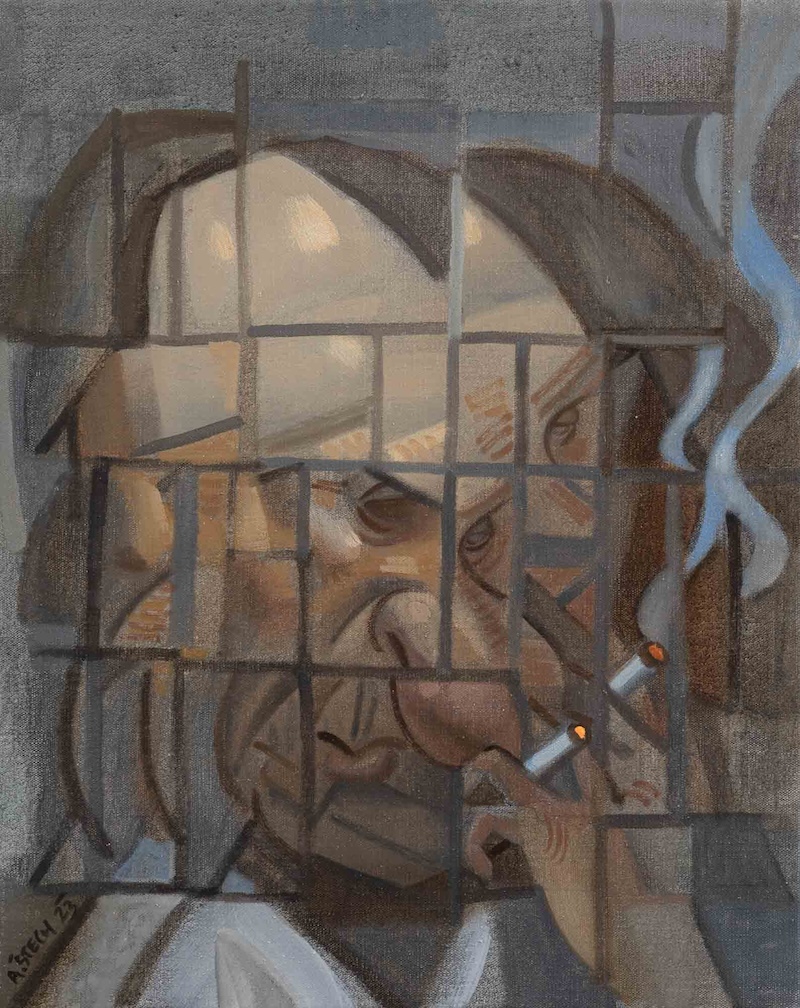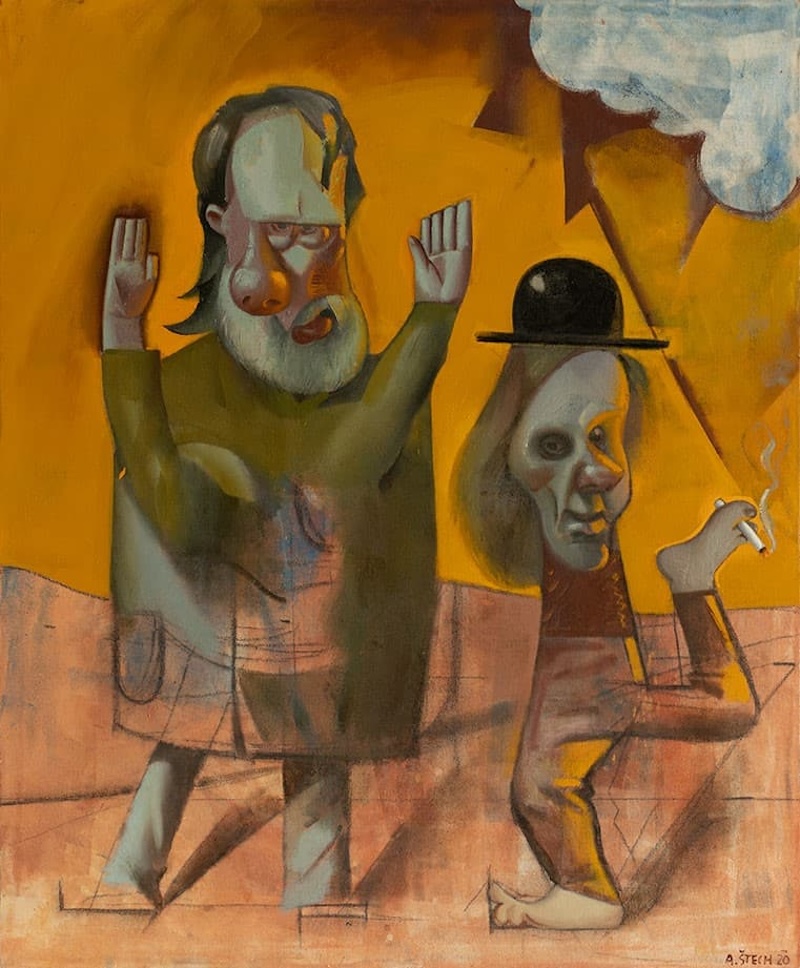The exhibition houellebecq! by Adam Štech is neither a tribute to the French writer Michel Houellebecq nor an illustration of his works. Nor does it attempt to interpret or explain anything of his texts. Štech explores primarily himself, however mediated. It is important for him to enter the work himself, which paradoxically also allows for a kind of detachment and reserve. Štech’s artistic world is diverse, ranging from self-portraits, images of family and friends to politicians and pop stars. He often returns to a single subject repeatedly, trying out different formats and colour schemes. The works inspired by Houellebecq were not created with the idea of a coherent body of work in mind, but more or less spontaneously, and it took several years before the theme began to emerge in clearer contours in the context of Štech’s work.
Štech is first and foremost a painter, which is why it is perhaps surprising, but also significant, that his imaginary Houellebecq cycle begins with a sculpture. The larger-than-life bust of the writer was created in 2017. The work appeared in a solo exhibition at Ideal Standard that year, installed in a glass window and looking out onto the street at random pedestrians. For most viewers the face was unfamiliar, with few knowing that he was a celebrated poet and novelist, the recipient of numerous awards and derogatory epithets. At that time, most of his works had already been translated into English, most recently his 2015 novel Submission. Houellebecq's reception in the Czech environment did not differ much from other cultural regions, ranging from enthusiasm to sharp rejection, as a visionary or a mere pornographer. But discussions of Houellebecq are in some cases as interesting and thought-provoking as his work.
Štech’s large-scale double portrait Houellebecq and Žižek from 2019 and a different version of the same subject from the following year make eloquent contributions to this debate. Štech is as ironic and caricaturing towards Houellebecq as he is towards himself and his surroundings. He shatters the mirror, and the newly composed image is not flattering, but perhaps all the more true. Such an approach also requires the artistic courage to open up one’s private life, however stylized, to the audience. Štech does not lack this boldness, and he and Houellebecq share a common ground on this point. It is an openness of form and content, of body and soul, as well as a subtle play with the spectator, confusing and unnerving them. The intensity is multiplied by the complexity of the individual images (portraits, landscapes or still lifes) and their imaginary dialogues. They thus have a narrative capacity of their own, becoming the successive chapters of a transforming novel, fluid and different for each viewer and dependent on individual experience.
Curated by Otto M. Urban // https://www.dox.cz/en/whats-on/adam-stech-houellebecq













